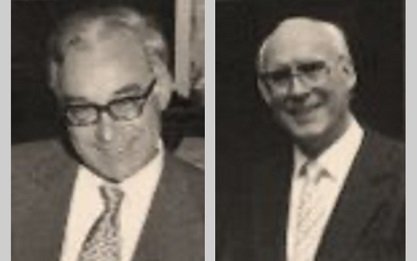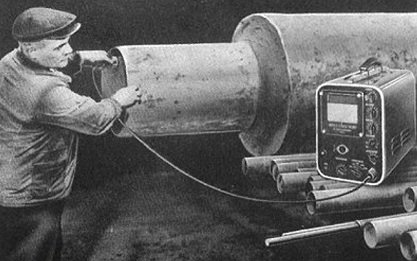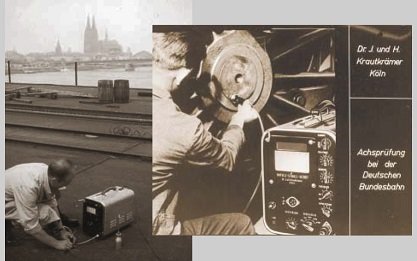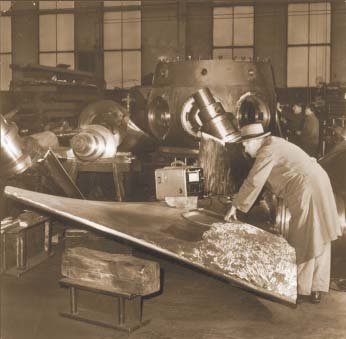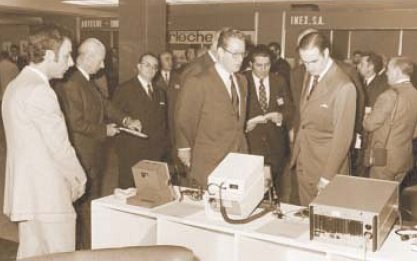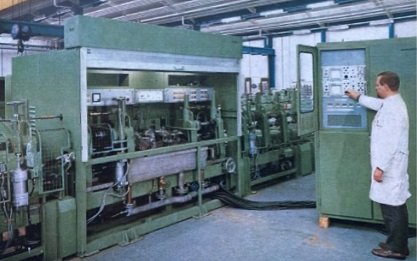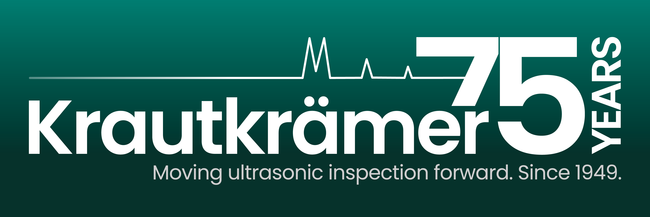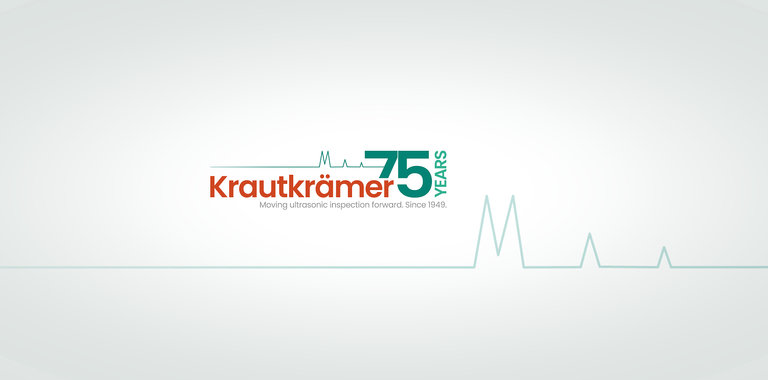
The Krautkrämer Legacy Story
In this article:
- Krautkrämer’s Origins Rooted in Post-War Innovation: Founded in 1946 by brothers Dr. Josef and Herbert Krautkrämer in a garage in Cologne, Germany, the company began as a small electrophysics lab focused on repairing and developing measuring instruments
- Pioneering Ultrasonic Testing for Industrial Applications: The brothers responded to a challenge from Krupp-WIDIA to detect subsurface defects in metal carbide dies, leading to the development of one of the first ultrasonic flaw detectors
- Breakthrough in Non-Destructive Testing (NDT): In 1949, Krautkrämer introduced Germany’s first ultrasonic testing device capable of visualizing internal flaws in steel, marking a turning point in industrial inspection technology
- Legacy of Innovation in NDT Technology: Over 75 years, Krautkrämer has become synonymous with precision and reliability in ultrasonic testing, influencing global standards in quality assurance and safety
- Foundation of Waygate Technologies’ NDT Leadership: Krautkrämer’s pioneering spirit and technological breakthroughs laid the groundwork for Waygate Technologies’ continued leadership in advanced non-destructive testing solutions
In history, great stories of pioneering achievement often begin within the humblest settings. For Krautkrämer, this tale began – as so often in contemporary history of amazing technological developments – in a garage, amid the rubble of post-war Cologne in Germany in 1946. Dr. Josef Krautkrämer, a lecturer at the University of Cologne, and his brother Herbert, a student, faced the challenge of making a living until the university's reopening. Their means of choice? What they were best at: Physics!
With steadfast determination, they transformed their garage into a laboratory and proudly hung a sign that read: “Dr. Josef and Herbert Krautkrämer, Company for Electrophysics”. Their goal was clear: to solicit orders for the repair and development of all types of physical measuring instruments.
Yet, fate had bigger plans in store for the Krautkrämer brothers. In a serendipitous turn of events, they came across a challenge that went beyond the boundaries of their makeshift laboratory. The company Krupp-WIDIA was looking for a nondestructive testing method to minimize product rejects. This concerned wire drawing dies made of metal carbide which in many cases had blowholes and pores just below the surface of the material. However, at this time, these defects only became visible during the grinding process. In other words, a very uneconomical matter! The challenge, therefore, was to find a way to detect such defects prior processing the components further – a puzzle that could not be solved using conventional methods or X-ray.
The brothers got to work to solve the problem using ultrasound. With their passion for physics, they pioneered the development of an ultrasonic instrument utilizing the through-transmission method. While their initial creation fell short of expectations as tests with this method took far too long, it laid the foundation for a groundbreaking discovery that was to follow.
A quantum leap: The first true Krautkrämer instrument is born
In 1949, when the brothers officially founded the company "Dr. J. u. H. Krautkrämer Gesellschaft für Elektrophysik OHG", the evolution of their concept led to the development of an ultrasonic flaw detector in which the ultrasonic signals transmitted into the component are visualized on an oscilloscope. The device did not solve the core problem due to insufficient resolution, as it was unable to clearly confirm porosity detected just below the surface. This caused the customer to put this new development on hold. This disappointment significantly lowered the spirits of Josef and Herbert Krautkrämer.
Despite this setback, they succeeded in developing an instrument with a very special capability: the nondestructive detection of material defects in steel parts. This breakthrough, initially underestimated even by the Krautkrämer brothers, culminated in August 1949. At a meeting of Verein Deutscher Eisenhüttenleute (Association of German Ironworkers) in Düsseldorf, they presented their significantly improved ultrasonic testing device: The first of its kind in Germany and a typical "Krautkrämer product" with disruptive features that would shape later developments in industrial inspection.
This innovative flaw detector featured exceptional sensitivity, remarkably high resolution, and the ability to detect defects as small as one millimeter at a depth of less than ten millimeters, indicated by a high-frequency display with a range of 50 millimeters. With a pulse repetition frequency of up to 1,000 Hertz and a portable design weighing approximately 20 kilograms, it represented a paradigm shift in flaw detection technology.
Embarking on a remarkable journey
During the Düsseldorf meeting, Josef Krautkrämer gave a lecture on "Nondestructive Ultrasonic Testing" to an audience of around 100. Herbert Krautkrämer assisted him with the technical set-up and operated the projector. When the lights came back on at the end of the lecture, only a select trio remained, including the head of quality assurance at Deutsche Bundesbahn (Federal German Railways).
The interest of Deutsche Bundesbahn came from challenges it faced with its rolling stock and locomotives after 1945. Problems such as unsafe operational readiness, axle breakage and problems with the integrity of the rails continued to occur. Despite efforts to introduce X-ray technology, it was still not available. However, the innovative method presented by Josef and Herbert Krautkrämer promised viable solutions, particularly in terms of practical application. As a result, German Railways quickly became one of the first and most important customers in Krautkrämer's history.
Initially, the Krautkrämer brothers undertook an extensive sales campaign, traveling to various locations to demonstrate the effectiveness of their development firsthand. Their efforts bore fruit, demonstrating the ability of ultrasound to detect internal material defects in components. Each time a defect was identified by ultrasound, its usefulness was confirmed, often culminating in physical confirmation of the defect during subsequent disassembly. Although occasional debates emerged about the need to sacrifice expensive components for validation, and the time to failure can vary, the effectiveness of the tests remained constant.
The continuous development of ultrasonic testing equipment based on practical experience led to a gradual but steady influx of orders. In January 1951, all locomotives of the German Railways were inspected with a Krautkrämer solution, which led to the discovery of numerous critical and less critical axle fractures. This allowed the safe resumption of express train service thanks to ultrasonic testing. It seemed they offered not only a solution but a way to revolutionize the industry.
From garage to global stage
Since the reopening of the University of Cologne by end of 1945, Dr. Josef Krautkrämer had resumed his teaching activities with renewed vigor, while Herbert Krautkrämer diligently pursued his physics studies in which he later earned his doctoral degree. Their daily commute between the university and the company's “headquarters”, which was still located in the garage, had become a hive of activity with physics students eager to work as low-cost assistants.
Meanwhile, the company's business was flourishing. In 1952, an important milestone was reached when the first two employees, Dr. Ludwig Niklas and Dr. Werner Grabendörfer, both distinguished physicists, were hired and Krautkrämer's first "Research and Development" department was established. Specialized roles did not yet exist, instead everyone remained versatile in their tasks.
As the 1950s unfolded, the company's global footprint expanded rapidly, establishing its first foreign representative offices in Belgium and France. Subsequently, representatives were stationed across Europe and beyond, fueling the unstoppable ascent of Krautkrämer's testing equipment worldwide. Reflecting on their journey two decades later, Dr. Josef and Dr. Herbert Krautkrämer acknowledged their initial perception of driving the company forward, only to realize that they were propelled by the ever-increasing global demand.
Another hallmark of the Krautkrämer ethos was a commitment to knowledge transfer. In the mid-1950s, amid soaring sales, an expanding workforce, and burgeoning construction projects, the company's focus expanded beyond product development to include the integration of user expertise and field knowledge. This two-way exchange – which today would be summarized under the buzz word “co-creation” - underscored the philosophy of empowering inspectors with company know-how, a principle exemplified by the early initiation of monthly training courses on ultrasonic testing methods in 1955. This commitment to knowledge sharing and customer engagement continues to define the legacy of Krautkrämer to this day.
Enduring commitment to innovation
The history of Krautkrämer has been marked by innovations that have reshaped the nondestructive testing (NDT) landscape. In 1952, the wall thickness gauge was patented, which set a new standard with its remarkable accuracy, enabling precision measurements from 3 to 50 mm. In the 1950s, the Krautkrämer USM 2 became the world's first portable, battery-operated ultrasonic flaw detector, revolutionizing field inspection with its unmatched reliability and performance.
In these pioneering years of ultrasonic testing, Dr. Josef Krautkrämer unveiled the Distance Gain Size (DGS) diagram in 1958, a groundbreaking innovation that allowed for the consistent evaluation of natural defects through echo amplitude. The DGS diagram used the parameters of distance, gain, and size to improve the accuracy of flaw size determination. This marked a significant leap forward in the field. The business, now registered as Krautkrämer GmbH in Germany, soon followed suit, introducing market-ready devices equipped with the capability to precisely control gain in calibrated dB increments.
This commitment to innovation continued with the introduction of the ROT-50, the first rotating tube tester, in 1959. In 1960, Krautkrämer introduced USIP 10, the first device featuring gain adjustment in decibels, an indispensable function for defect evaluation. A year later, the Krautkrämer brothers, along with other esteemed authors, penned the seminal work "Ultrasounic Testing of Materials". [IM1] This comprehensive textbook, now in its 5th edition as of 1986, remains a cornerstone in explaining ultrasonic testing. Affectionately dubbed the "Ultrasonic Bible" by experts, its enduring influence and authority remain unparalleled in the field, reflecting the dedication and expertise of its creators.
In 1967, having long since outgrown its garage, the company moved its headquarters from Cologne-Klettenberg to Hürth-Efferen. Today, Hürth hosts the headquarters of Waygate Technologies, a Baker Hughes business, and remains the central hub for the Krautkrämer product line where ultrasonic equipment and machines are still designed and built.
Milestones in ultrasonic testing technology
Throughout the 1960s, the company's first automated multi-channel testing systems were developed, embodying efficiency and precision and laying the foundations for future advances. In 1971, DM 1 was introduced, a groundbreaking thickness gauge with a digital display the size of a camera, further advancing metrology. And in 1972, USIP 11, a universal, portable flaw detector with cutting-edge features such as Echo Start, TCG DGS, and monitor outputs, cemented the Krautkrämer reputation for product reliability and innovation in the industry.
The company was sold for the first time in 1971 and has belonged to various companies since then. Today, Krautkrämer lives on as part of the name of the ultrasonic product line of Waygate Technologies, a Baker Hughes business.
Since 1981, aerospace testing machines have been constantly evolving to meet the changing demands of the industry. NutroniK has significantly strengthened this area by integrating UTxx electronics into its portfolio, increasing performance and reliability. The introduction of USD 10 in 1986 was a defining moment and heralded the era of digital portable flaw detection. The subsequent introduction of USLT 2000 in 1999 represented a paradigm shift with its innovative laptop-based design and external ultrasonic hardware. In 2000, ROWA caused a sensation when it became the first testing machine to replace mechanical rotation with electronic beam guidance using phased arrays – a big achievement. The USM 35 was launched in 2004 and impressed the industry with its intuitive color flat screen and integrated DGS evaluation. Phasor XS, introduced in 2007, simplified phased array ultrasonic inspection and democratized access to advanced technology. In 2009, USM Go became the smallest and lightest inspection device, giving technicians unprecedented mobility.
In 2014, USIP|xx was launched, equipped with the most powerful ultrasonic electronics for automated testing with phased arrays. In particular, WheelStar UFPE, in operation since 2016, exemplifies innovation in automated underfloor wheel inspection for high-speed trains and demonstrates a commitment to safety and reliability. USM 100, a product that redefines flaw detection with its versatility and digital features, was launched in 2021. The recent integration of phased-array electronics into the probe of the RotoArray comPAct in 2023 represents a continued commitment to develop break through technology and meeting the ever-changing needs of the industry.
With their passion for physics, Dr. Josef and Dr. Herbert Krautkrämer have pioneered the development of industrial ultrasonic inspection from the day they initially set up their business in a small garage in Cologne. Their passion and commitment to foresight paired with reliability and quality is continued until today. Krautkrämer lives on as part of the name of the ultrasonic product line of Waygate Technologies, a Baker Hughes business – today world market leader in NDT solutions for industrial inspection.
As we look back on 75 years of Krautkrämer products, we recognize a legacy that is still intertwined with the aspirations of its founders. Every milestone, every echo is a tribute to their spirit of innovation, which we continue.

